The newest resident of the Kimmel Center isn’t a performing arts organization. It’s a piano.
The innovative, ergonomically designed Maene-Viñoly Concert Grand is now housed in the Rendell Room. And it’s not just a museum piece. Any pianist appearing at the Kimmel Center will be able to perform on it if they choose to.
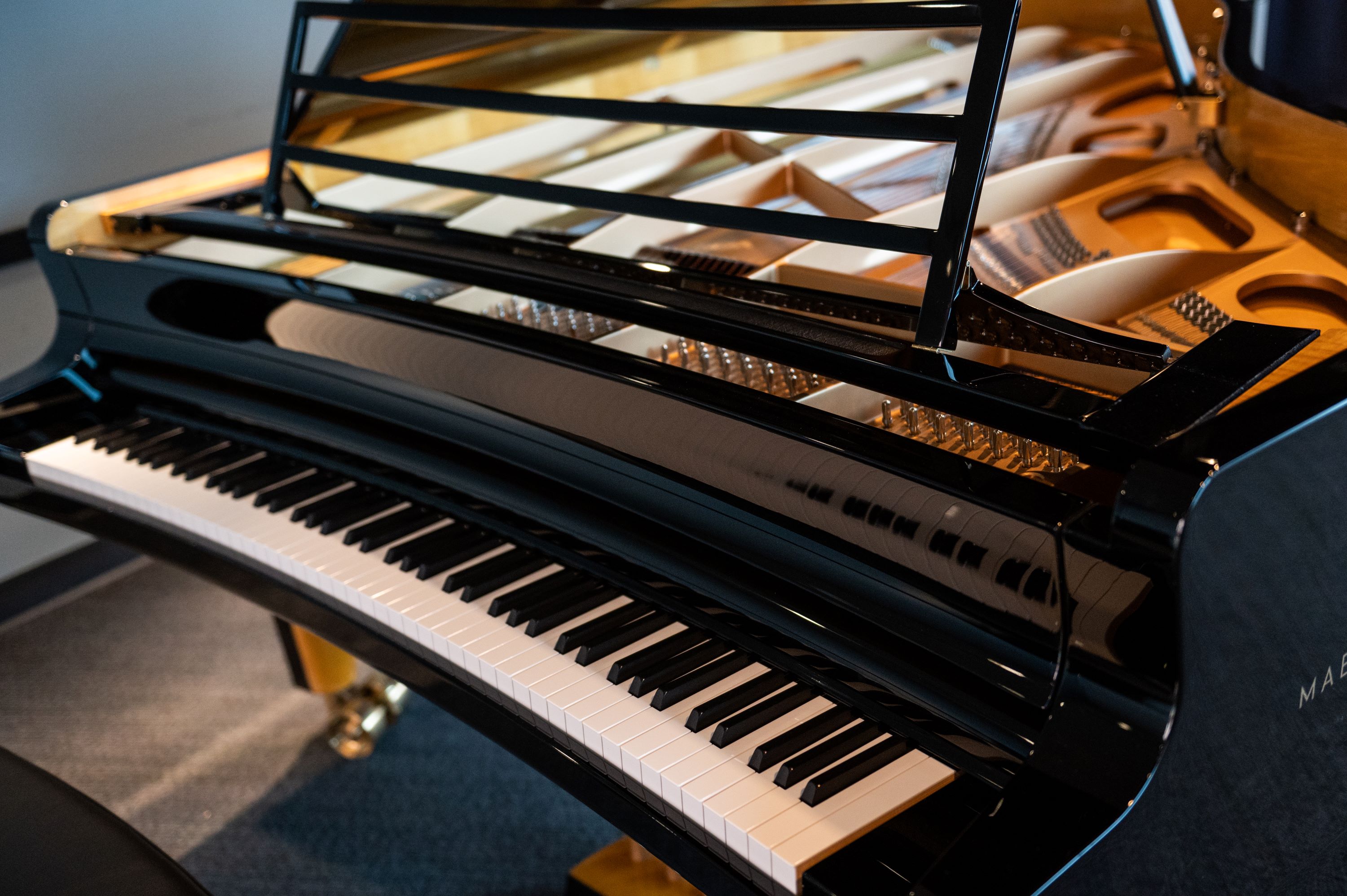
The Maene-Viñoly Concert Grand Piano. Photo by Allie Ippolito
The piano is paired with a small exhibit on Rafael Viñoly and the Kimmel Center on the south side of Tier 1, an homage to the legendary architect (and accomplished amateur pianist) who died last March. The Kimmel Center is one of his most iconic designs, a highlight in a half-century career, during which he created more than 600 projects, from courthouses, concert halls, and museums to airports, stadiums, and science buildings around the world.
Rafael’s son, Román Viñoly, the director of the Viñoly Foundation, recalls, “Music was my father’s purest passion, which he nurtured daily through his avid piano study and near-constant listening. His deep love of music filled him with immense pride at having designed the hall for The Philadelphia Orchestra.”
At first glance, the instrument looks like all the other world-class pianos that have graced concert stages for over a century. But then, there’s the keyboard. That familiar sweep of black and white has been transformed into an arcing shape, fitting the range of a pianist’s arms.
The piano was built by renowned artisanal piano maker Chris Maene, who runs the workshop his parents founded in Ruiselede, Belgium in 1938.
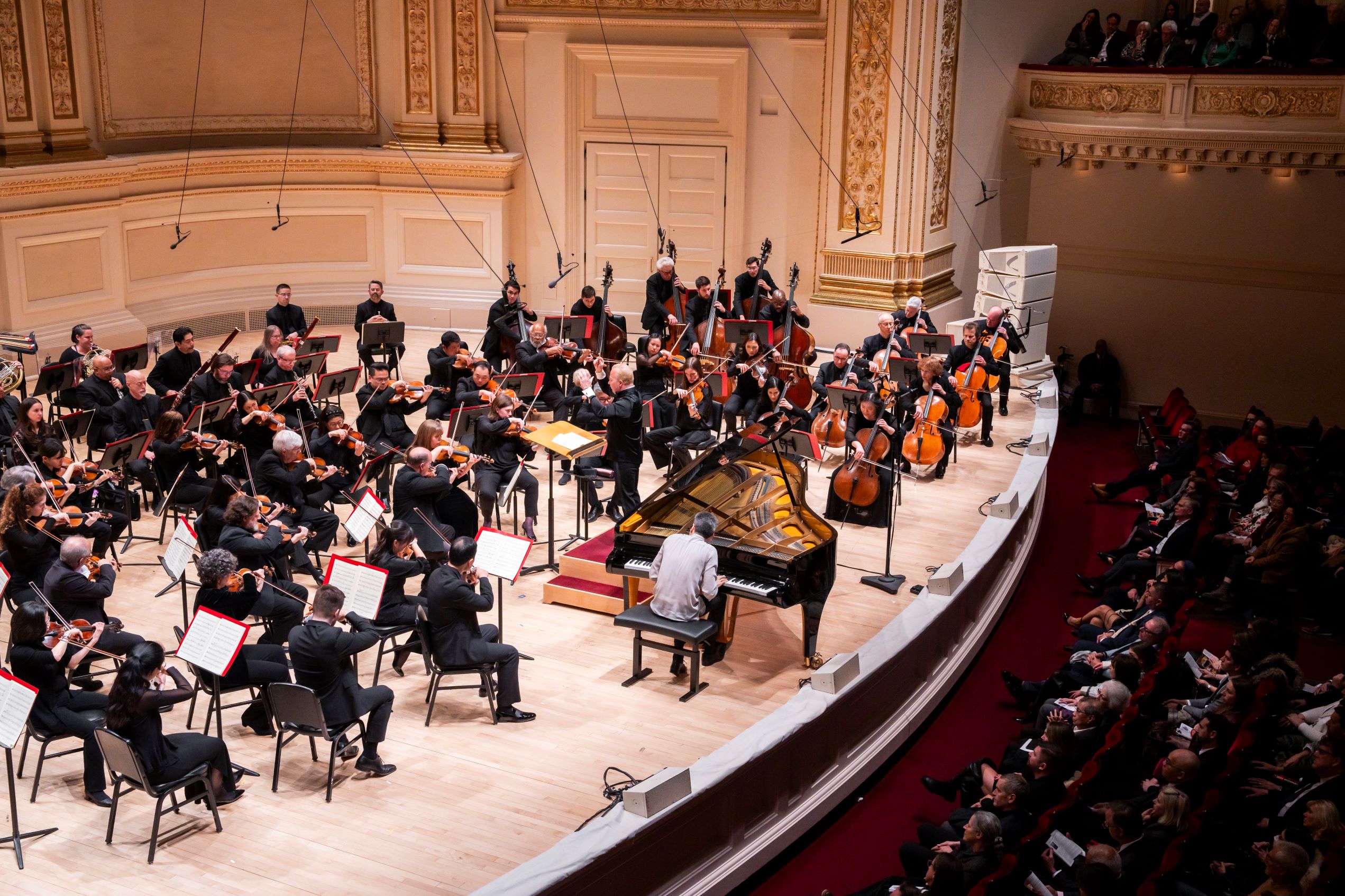
Jonathan Biss plays Beethoven’s Fifth Piano Concerto (“Emperor”) on the Maene-Viñoly Concert Grand with Yannick and The Philadelphia Orchestra at “A Musical Celebration of the Life of Rafael Viñoly” last November at Carnegie Hall. That concert marked the North American debut of the instrument. Photo by Chris Lee
Several years ago, Maene had been working with Daniel Barenboim to create a piano that had the strings in a straight pattern, which makes a distinctive sound, but a “normal” keyboard. Through Barenboim, Viñoly learned about the Maene company. One night at dinner, Barenboim and Viñoly were talking about pianos, and Barenboim mentioned that a traditional keyboard was difficult for someone like him, with fairly short arms. That was the germ of the curved keyboard.
It took six years to make the first model. Maene recalls, “It was a long time, because it started with some drawings Mr. Viñoly had made. He asked, ‘Do you think you can do something with it? If you can’t, I’m going home to design buildings!’”
It wasn’t simply a matter of “encircling” the pianist, making the keys easier to reach. Inside, the Maene-Viñoly’s strings are also in a straight pattern, instead of the crossed arrangement perfected by Steinway. That, in turn, led to a host of departures from how a “normal” piano is built, all of which took time to perfect.
Maene admires Steinway; he restores and sells their pianos in his workshop. “Their idea was very good, and very clever, to have a unified sound over the whole range of the piano. Before Steinway, pianos had more readily identifiable bass, middle, and treble ranges.” Product Manager Henk Swinnen adds that, in comparison, “Our piano doesn’t try for homogeneity, but more colorful, independent voices. Some pianists compare it to conducting a choir.”
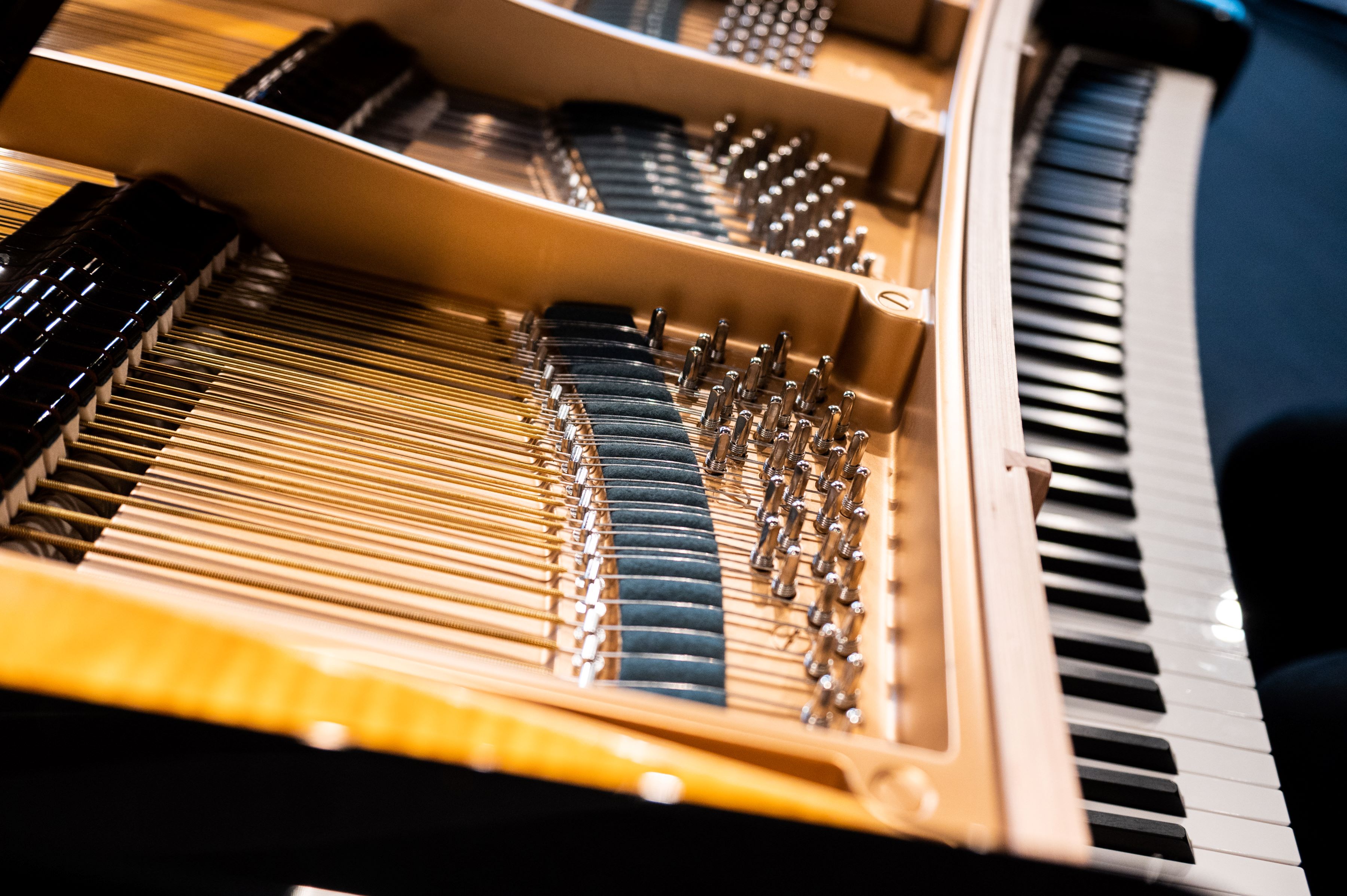
The inside of the Maene-Viñoly Concert Grand, showing its strings in a straight pattern rather than in a crossed pattern found in most other pianos. Photo by Allie Ippolito
The curved keyboard seems like such a logical idea, why didn’t anybody think of it sooner? Maene points out that 16th-century keyboards had 45 notes or fewer. As that number roughly doubled over time, the length of the keyboard grew, but people were simply used to a straight keyboard.
“Viñoly’s idea was, if the piano didn’t exist, why not invent one that’s easier to play? A curved keyboard is a more natural way of playing piano for the long term.”
Some of the world’s greatest pianists seem to agree. Swinnen recalls when Emanuel Ax visited the workshop and played the instrument. “He was amazed.” So much so that Ax agreed to play the instrument for his upcoming Philadelphia Orchestra performances in March. Swinnen continues: “Even though it looks really odd when you see it, when you close your eyes to play without the visual reference, your fingers and your body movement automatically adapt immediately, and it feels much more comfortable.”
When the Maene-Viñoly was ensconced at the Kimmel Center, another renowned pianist, Jonathan Biss, put it through its paces, playing several Schubert impromptus. He also made the instrument’s North-American concert debut last November, performing Beethoven’s “Emperor” Concerto at a special Carnegie Hall tribute to Viñoly, with The Philadelphia Orchestra under Yannick Nézet-Séguin.
“What I always look for in a piano, above all other things, is a layered sound,” Biss says. “What you hear on this piano is not just the immediate attack or impact, but reverberation and complexity; there are multiple dimensions to the sound. I was initially struck by how many possibilities this piano offered. It had variety and depth. A piano like that has a soul, and a piano with a soul is exciting to play.”
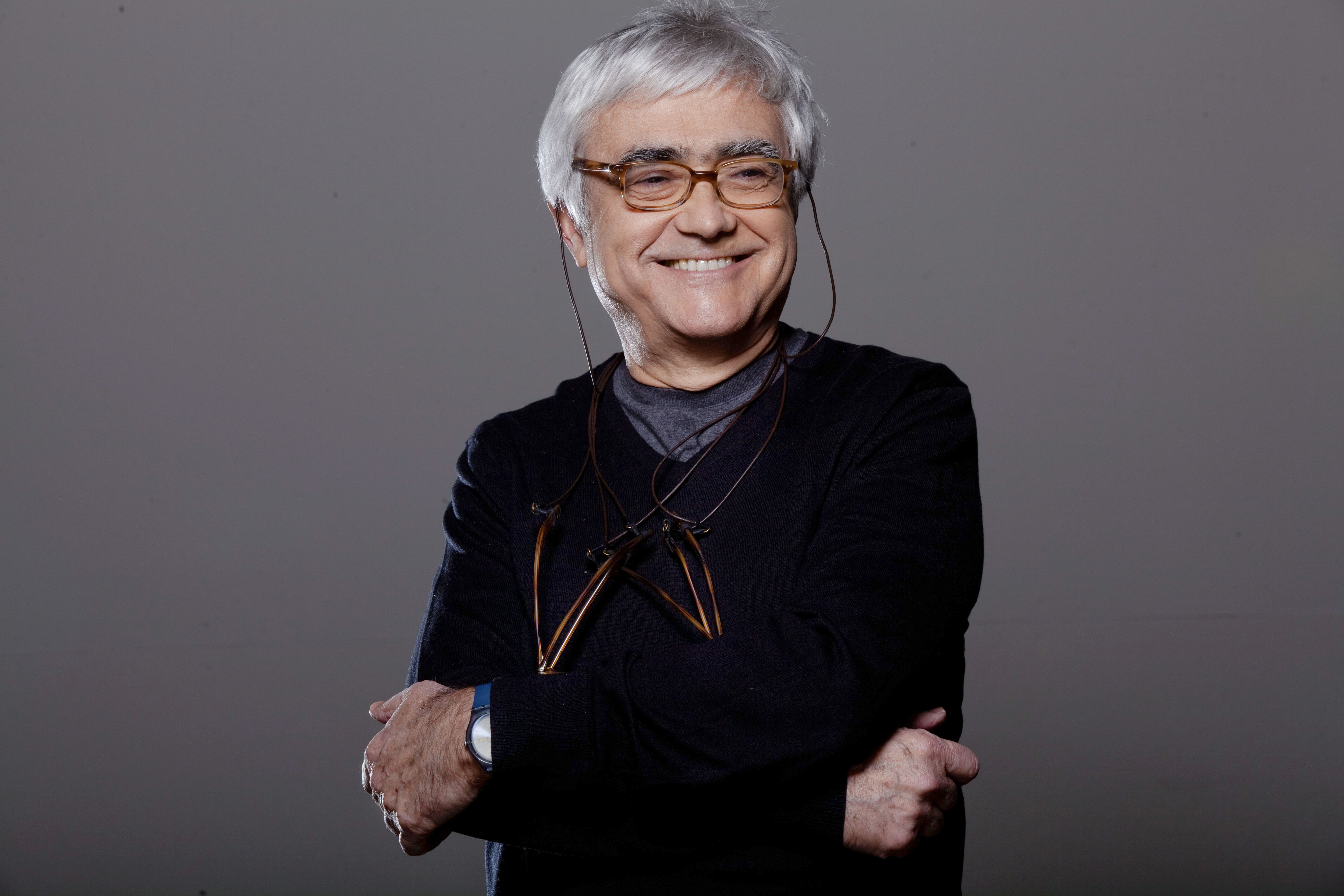
Rafael Viñoly. Photo by Elizabeth Lippman
The Schubert he played “is music that requires so much warmth, and so much intimacy, not qualities that a large majority of modern pianos can readily produce. And I instantly felt that this piano had those qualities. Given that it's a different maker, with a different philosophy of sound from the ones I usually play, I had sort of assumed that there would be an adjustment period. And there really wasn’t. I felt like the piano and I understood each other, from the moment that I sat down at it.”
Matías Tarnopolsky, president and CEO of The Philadelphia Orchestra and Kimmel Center, Inc., is an old friend of the Viñoly family. He’s especially pleased to have this innovative piano at the Kimmel Center.
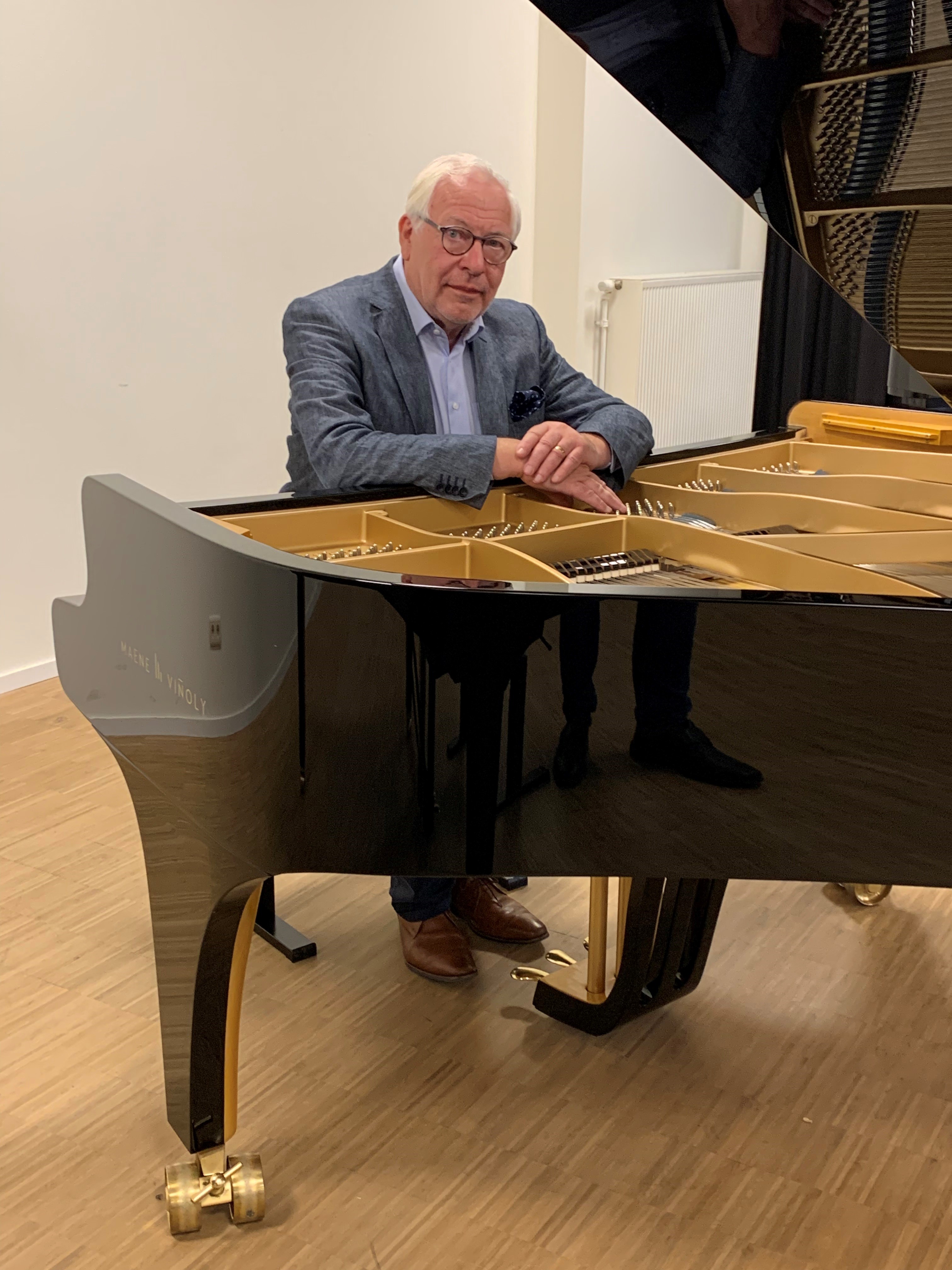
Chris Maene seated at the Maene-Viñoly Concert Grand. Photo by Chris Maene Workshop
“Rafael put his heart and soul into designing the Kimmel Center; The Philadelphia Orchestra is fortunate to call it home. It stands as an embodiment of his great love for the arts and his commitment to human-centered, inclusive spaces. It is only fitting that the innovative piano he designed finds its home in one of his most iconic buildings. We look forward to sharing this extraordinary gift with our communities, both in this public display and in performances on our stages in the future.”
Steve Holt, managing partner at re:Write, is a veteran journalist and musician.